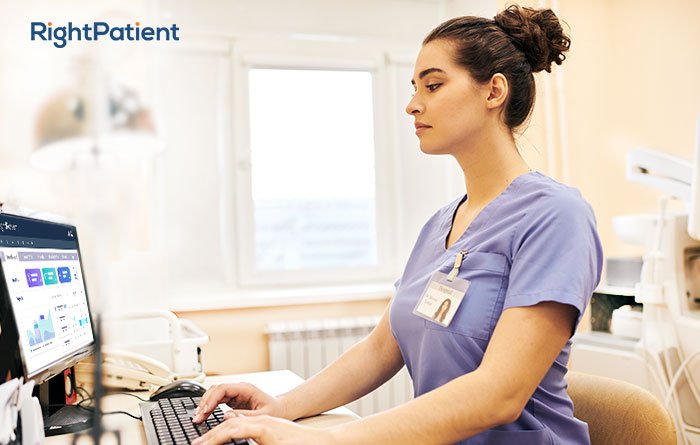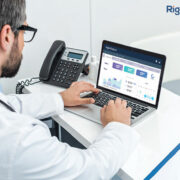Improving Patient Outcomes Relies on Identifying Patients Even During COVID-19

Healthcare in the US has always had its fair share of troubles. Price transparency issues, medical identity theft, data breaches, denied claims, and interoperability issues are just some of the many issues plaguing it. However, it is having arguably one of the worst times it has ever faced due to COVID-19. To date, over 14 million American citizens have been infected with the infamous virus, whereas over 270,000 people have lost their lives battling it. Due to the spike, hospitals are shutting down, health systems are closing their emergency departments, elective surgeries are being canceled, and healthcare staff members are being pushed to their limits once again. It feels like a particularly bad déjà vu. While healthcare providers are doing whatever they can to help with improving patient outcomes, many are facing a critical issue that has been an impediment to quality healthcare for years – patient identification errors.

Having said all that, let’s focus on:
- why patient identification errors are a big deal even during the pandemic
- what healthcare providers are doing to address it
- how a tried and tested solution ensures patient safety and quality healthcare, improving patient outcomes in the process
Patient misidentification is nothing new
Anyone who knows anything about the US healthcare system has heard at least one story about patient misidentification or something related to it, such as duplicate medical records, patient mix-ups, incorrect surgeries, medical errors, etc. It has been occurring for years, leading to delayed patient care, detrimental patient outcomes, repeated lab tests, among other consequences. While many caregivers have been facing all these challenges for quite some time, a large number of them didn’t pay much attention to the problems. Everything changed with the pandemic – let’s see how.
Improving patient outcomes is difficult due to existing issues
COVID-19 pushed everything to its limits, especially the healthcare providers, and they were forced to face the issues that significantly hamper patient outcomes. One of the more prevalent issues was, and still is, patient misidentification.
HIMSS VP of Government Relations, Tom Leary, said that public health response efforts can be significantly impacted by inaccurate patient data, and that’s exactly what happened during the first wave. Since patient identification was erroneous in most healthcare facilities, this led to improper data sharing, delayed test results, sending results to the wrong patients, and more. Nurses even tried to google patients so that they could send them the test results!

COVID-19 is an unprecedented situation that requires prompt responses that can help save lives, and issues such as patient identification errors significantly hamper the efforts put forth by frontline teams. So, what are healthcare providers doing to address it?
Healthcare providers are urging for the UPI
The US healthcare system was supposed to get a unique patient identifier (UPI) years ago, but a bill had restricted state funding to create one. Since then, most healthcare providers have been struggling to identify their patients accurately. Each year, experts come together and urge the ban’s abolishment, but their requests get rejected every time – for almost two decades. Even if the mythical UPI is made, it won’t be enough to solve such a huge problem by itself.
However, not every hospital is struggling with patient identification errors – many forward-thinking ones are using RightPatient.
Improving patient outcomes is possible with RightPatient
RightPatient is a touchless biometric patient identification platform that is the most feasible solution currently, given the pandemic. It uses the characteristic that cannot be stolen, lost, or transferred, patients’ faces, to verify identities. However, the part that makes RightPatient ideal for the pandemic is that it is entirely touchless, ensuring infection control and reducing hospital-acquired infections.
By locking medical records with patients’ photos, RightPatient protects patient data and accurately identifies patients. Moreover, it is versatile enough to be used across any touchpoint within a healthcare facility, starting from appointment scheduling.
After scheduling an appointment successfully, patients receive an SMS or email, and they are required to provide selfies as well as a photo of their driver’s license. The platform compares the photos for a match, ensuring remote authentication. If these are new patients, RightPatient provides them with new biometric credentials – making it a hassle-free experience.
Within healthcare facilities, patients only need to look at the camera – the platform compares the live photo with the saved one. After finding a positive match, RightPatient provides accurate medical records within seconds. This helps prevent patient mix-ups, duplicate medical records, medical errors, denied claims, and patient safety incidents – improving patient outcomes. Moreover, it can also prevent medical identity theft in real-time, as it red-flags fraudsters who try to assume patients’ identities.
RightPatient can enhance healthcare outcomes, improve patient safety, and reduce significant costs – something which is extremely crucial for hospitals right now in order to survive.
Contact us now to learn how we can help you improve your bottom line.









Leave a Reply
Want to join the discussion?Feel free to contribute!